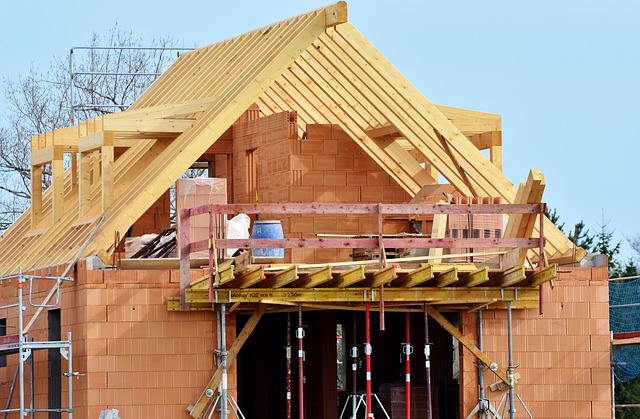Here’s a scenario, for example, that Californians might wish to avoid:
The city of Altadena, previously a relatively low-density suburb with detached single family homes, is rebuilt with two-story townhomes along the narrow neighborhood streets, and three-story “luxury apartments” along the four-lane boulevards. There is inadequate street parking at this density, but most of the townhomes and apartments also come with a one-car garage, and all of them are equipped with a state building-code-mandated EV charger.
And then, on a dry and windy day in, say, 2033, an EV battery catches fire in a garage, with the overheated cells exploding one after another. As the whole structure begins burning, the wind whipped flames ignite neighboring dwellings and the conflagration spreads. Residents attempt to flee en masse but with a population density five times what it was 10 years earlier, the roads are impassable. Hundreds of people are dead, thousands of dwellings are immolated.
That’s the downside of an all-electric, ultra-high-density future. And that’s precisely the path we’re on. Thanks to political neglect of known fire-prevention measures, the risk of catastrophe is elevated. Thanks to decades of over-regulation of the home-building industry, the cost of rebuilding is elevated, too.
And thanks to state policies that chased away insurance companies that were prevented from raising their premiums to account for higher risks and higher claims, most of the people living in Altadena will not be able to rebuild even if they still have some coverage. The burnt areas will either gentrify as a more affluent clientele moves in and rebuilds, or institutional investors will buy up the properties, collect affordable-housing subsidies and build apartments.
The conventional wisdom in California is that high-density housing is the only sustainable policy option. But it rests on false assumptions relating to land, transportation, energy, water and cost. There is no shortage of land in California. The sprawling state offers ample space along thousands of miles of major freeway corridors to build single-family homes. If 10-million people moved into new homes on quarter-acre lots, with four people per household – and an equal amount of space were set aside for parks, schools, roads, shopping centers and industrial parks – California’s urban footprint would only increase from 5% to 6.2% of the state’s total area.
Transportation policy in California is also flawed. Widening and upgrading major freeway arteries is far less expensive and yields far more practical benefits compared with constructing high speed rail. Moreover, the ongoing revolution in clean EVs, smart cars, share cars, smart traffic management, passenger drones and remote work opportunities promise to make expansion of decentralized suburbs viable and sustainable.
Water and energy are also not scarce in California. If the state invested in expanding its water supply infrastructure through an all-of-the-above approach that incorporates runoff capture, off-stream reservoir and aquifer storage, wastewater reuse, and desalination, the state would have water abundance even during droughts.
A more tolerant and less rationing-oriented policy for urban landscapes – lawns, anyone? – would make urban landscapes cooler and increase ambient humidity, making them less susceptible to runaway fires. As for energy, if the state permitted competition between rapidly evolving renewable energy options and ultra clean nuclear and natural gas providers, energy would be affordable and abundant.
These policies would also lower the cost of housing in California. If the state invested in enabling infrastructure, and deregulated the private sector so it could profitably compete to build it, subsidies to politically connected developers wouldn’t justifiable or needed. A decentralized, lower-density urban and suburban environment would lower risk of fires causing mass destruction. Insurance companies would return to the market with affordable policies.
California’s state government has slowly morphed into a monster that rewards special interests that cost taxpayers tens of billions of dollars every year. Most of the money is wasted. Instead of high-speed rail, invest in smart roads. Instead of homeless housing and affordable housing, deregulate the housing market. Instead of promising to spend billions to thin the overgrown and mismanaged forests, restore California’s logging industry which would create jobs and lower the cost of lumber. Instead of “infill,” permit new single-family home subdivisions on open land.
Instead of spending billions to ration water, permit new water projects to increase supply. Instead of “net zero,” establish reasonable carbon intensity targets so natural gas can remain a competitor, and permit next generation nuclear power plants. Instead of exclusively redirecting more funds to conventional fire fighting, also invest in drones to monitor and immediately spot fires in the windy canyons as soon as they start. Invest in fleets of water-carrying drones to safely extinguish small fires.
This disaster is a clarifying moment. The leaders running California today can embrace a future of abundance, innovation, private-sector competition and affordability, or they can cling to the flawed utopian visions of the so-called smart growth movement. We are at a crossroads. We should hope the state makes the right choice and returns California to its roots – a trend setter, an inspiring example, a place where anyone willing to work hard can make their dreams come true.
Edward Ring is a co-founder of the California Policy Center and the author of “The Abundance Choice: Our Fight for More Water in California.”

